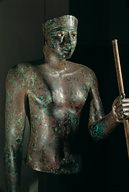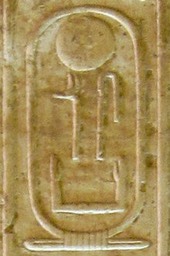All kings of the 6th dynasty, except for Merenre II and Nitocris, are attested by archaeological sources. Merenre II and Nitocris are only known through the king-lists and Manetho. No known monuments give there names and they are not even mentioned in inscriptions of high officials.
Because the king-lists often give Merenre II the same titulary as Merenre I, it is believed that at least his titulary may be the result of a mistake.
The Turin King-list makes a summation of regnal years for the first five dynasties, before listing the kings of the 6th through 8th dynasties. This may suggest that with the 6th Dynasty, a new royal house came to power. The relationship between the founder of the 6th Dynasty and his predecessor is debated. It is believed by some that he may have been married to his predecessor’s daughter.
From a cultural point of view, the 6th Dynasty is the continuation of the end of the 5th Dynasty. The kings continued to commission pyramids for their mortuary cult. The pyramids and mortuary temples of this period are of a standard size and basically have the same layout. The burial chamber, antechamber and entrance corridor of these pyramids are inscribed with Pyramid Texts, following the example set by Unas of the 5th Dynasty. Most kings of the 6th Dynasty also chose to build their funerary monument in Saqqara and here too they were following the example of the last two kings of the 5th Dynasty.
The long reign of Pepi II, who came to power as a child, has often been seen as the cause of the decline of the 6th Dynasty.
Governmental reforms were intended to strengthen the residence's hold on the rest of the country. It is often claimed that the policy of instating local governors in the provinces eventually caused the downfall of this dynasty and of the Old Kingdom. It can indeed be noted that during the 1st Intermediate Period, the power of these local rulers appears to have increased, to the detriment of the central government. The long reign of Pepi II is also often considered the cause of the end of the Old Kingdom. In this view, the elderly king's court was the stage of intrigue and plot, with different members of the royal family and some high ranking officials conspiring to get a grasp on the government. It must, however, be noted that there is no evidence to support this "romantic" fantasy. Even if the ageing Pepi II were unable to rule the country by himself, the central administration was organised well enough to govern in his place.
It is believed more and more that changes in climate and a lower inundation of the Nile are likely to have played an important part in the downfall of the dynasty.
Click on the thumbnails below to learn more about the kings of the 6th Dynasty.

